It’s one of the most intriguing frescoes ever created, and in this post, you’ll discover the ultimate list of facts about the School of Athens.
Want to see more paintings by Raphael? Here is our list of his best paintings!
1. What is the School of Athens?
The school of Athens is a fresco painted by Raphael between 1509 and 1511. It’s a fresco that decorates one of the “Raphael Rooms” or “Stanze di Raffaello” in the Vatican. It was commissioned by Pope Julius II (1443-1513).
It’s considered to be one of Raphael’s ultimate masterpieces and has been described as the “embodiment of the classical spirit of the Renaissance.”
2. Where is the School of Athens located?
The fresco is located in the “Stanza della Segnatura” in the Apostolic Palace in the Vatican. The palace is the official residence of the Pope and the Raphael Rooms used to be reception rooms that are now part of the Vatican Museums.
The Stanza della Segnatura, which used to be the Pope’s library, is believed to have been the first of the 4 Raphael Rooms to have been decorated and the School of Athens was the third of the 4 frescoes to have been painted in that room after “La Disputa” and “The Parnassus.”

3. It was painted by one of the most talented artists ever
The early 16th century was a period of unfathomable talent. Here you have 3 of the most prolific artist living together at the same time and basically in the same place. Michelangelo, Leonardo da Vinci, and Raphael. Together they form the trinity of talent of the High Renaissance.
Raffaello Sanzio da Urbino was the youngest of the 3 and was already at the top of his game in his mid-20s when he started his work on the Raphael Rooms. He was admired by his contemporaries and a superstar.
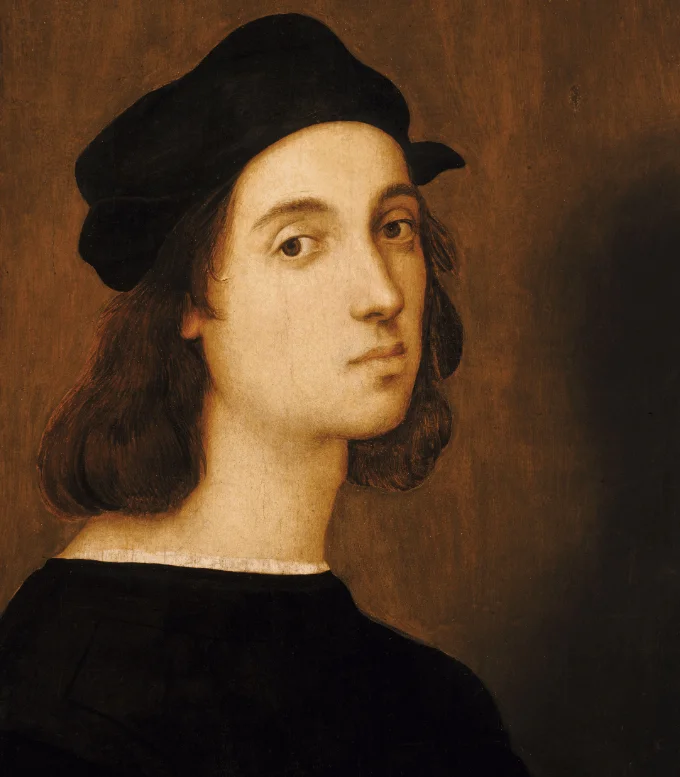
4. Raphael died young but left an amazing legacy
Like many superstars, he died young, but his work ethic was so high that in his 37 years on the planet, he left a legacy that can be admired by countless future generations.
To emphasize his status at his death, he was granted his last wish to be buried amongst many other notable people in the famous Pantheon in Rome.
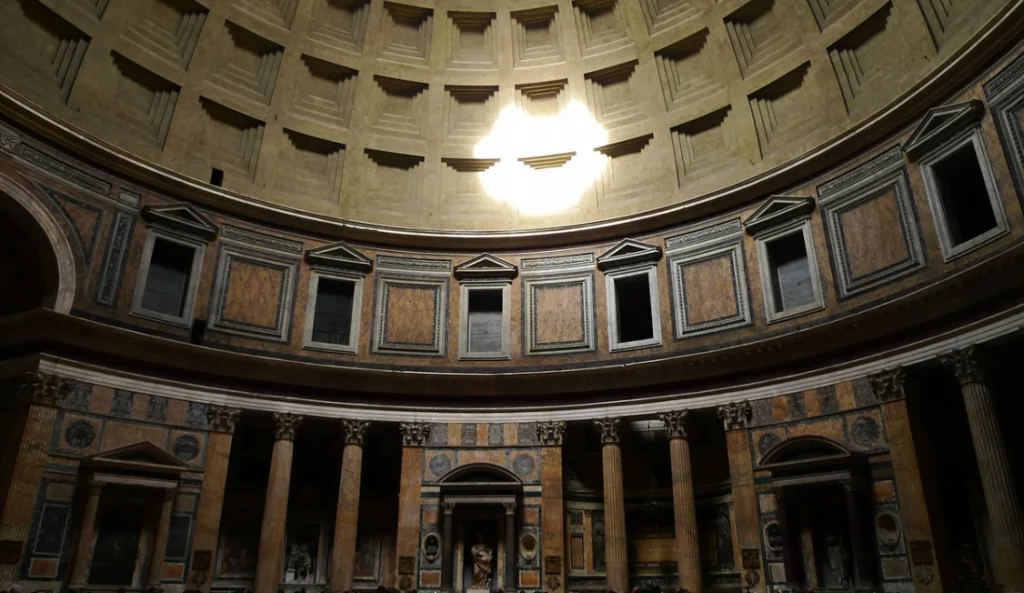
5. It’s part of a series of frescoes
There are a total of 4 Raphael Rooms which form a suite of reception rooms inside the Apostolic Palace in Vatican City. These 4 rooms contain 4 frescoes each.
The Stanza della Segnatura consists of 4 frescoes with 4 different themes about knowledge, namely:
- Theology
- Philosophy
- Legal Theory
- Poetry
The first fresco that Raphael painted as part of his commission to decorate the rooms was the “Disputation of the Holy Sacrament,” which depicts the theme of knowledge in theology.

6. It depicts the most famous seekers of knowledge
The School of Athens was the third fresco to be created in the Stanza della Segantura after the frescoes with the themes of theology and poetry had been completed.
It depicts the greatest philosophers, mathematicians, philosophers, and scientists in history, and puts them together under one roof.

6. It’s not clear who all the figures in the painting are
One of the most interesting facts about the School of Athens is that it’s not exactly clear who Raphael depicted. The only two figures of whom we are certain of their identity are Plato (left) and Aristotle (right), who form the architectural central vanishing point of the fresco.
Even though it has been suggested by many historians that just about all the great philosophers of Ancient Greece have been included, it’s impossible to determine who is who.
The main reason for this is the fact that there is no visual image of the people that are depicted such as in earlier paintings or busts.
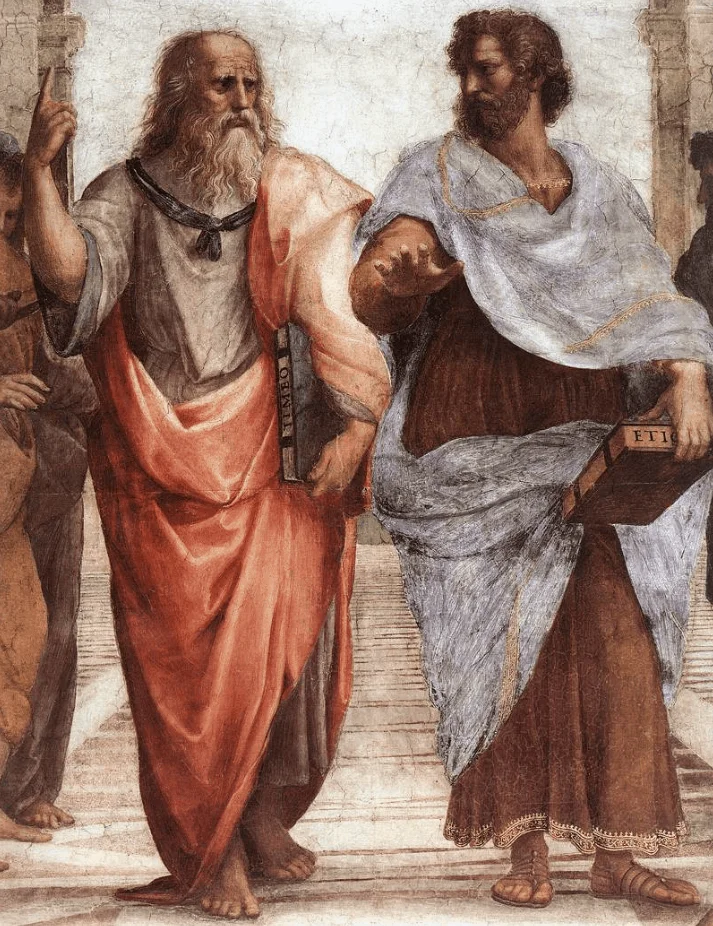
7. Raphael used colleagues as models
because there was no visual available to paint a lot of these ancient figures, Raphael needed to be creative.
Just as Leonardo da Vinci scoured the jails of Milan to create Judas in his famous “Last Supper” painting to get inspiration, Raphael used figures close to him to paint the various philosophers. It’s believed these are:
Leonardo da Vinci as Plato
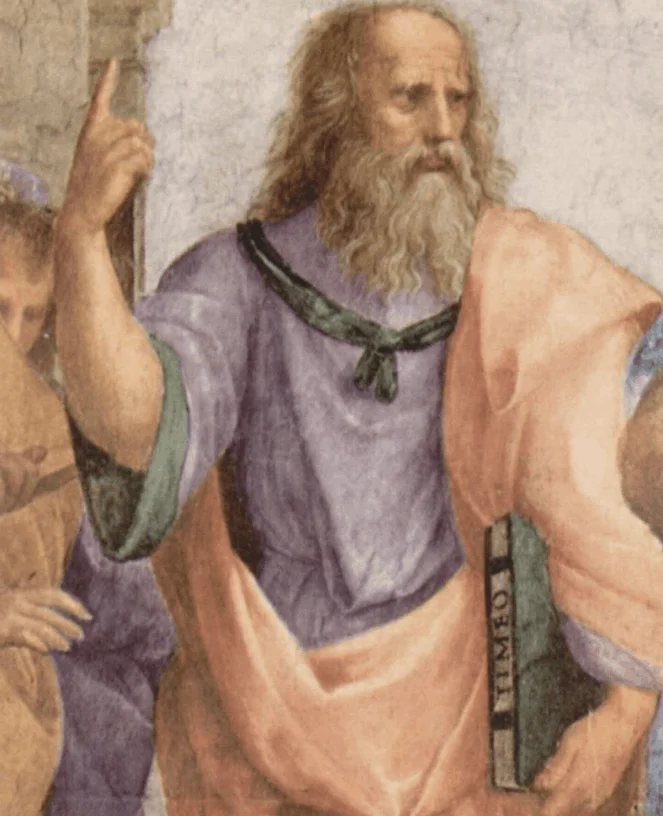
Giuliano da Sangallo as Aristotle
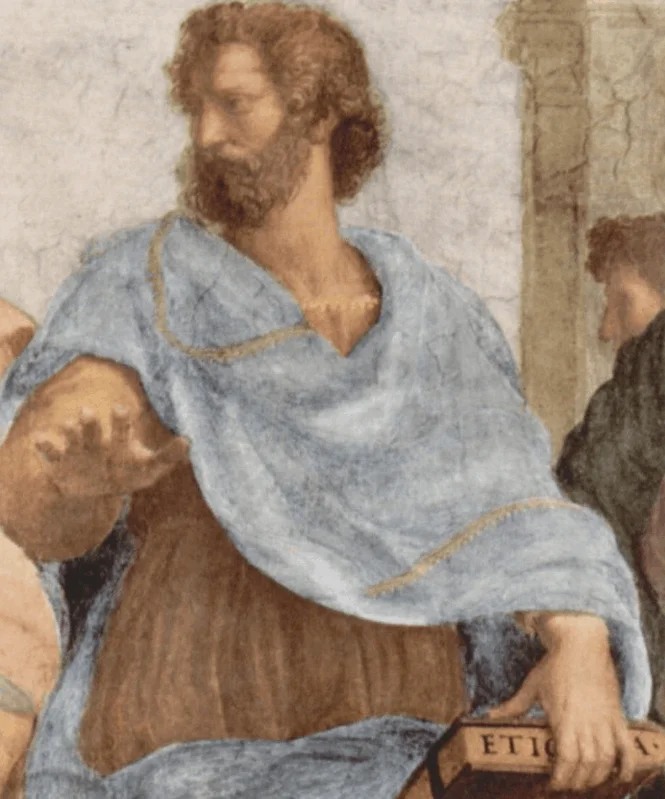
Michelangelo as Epicurus or Heraclitus
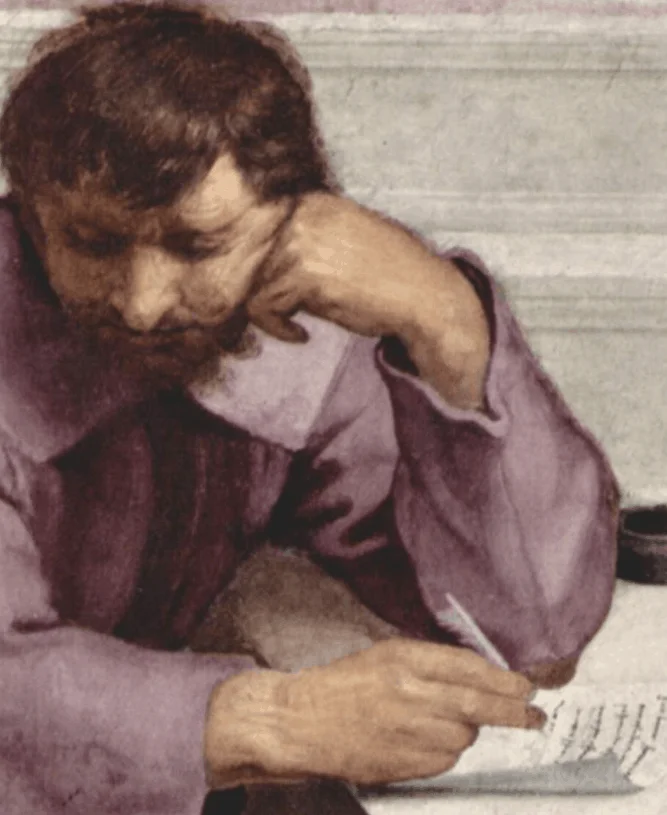
Bramante as Euclid or Archimedes
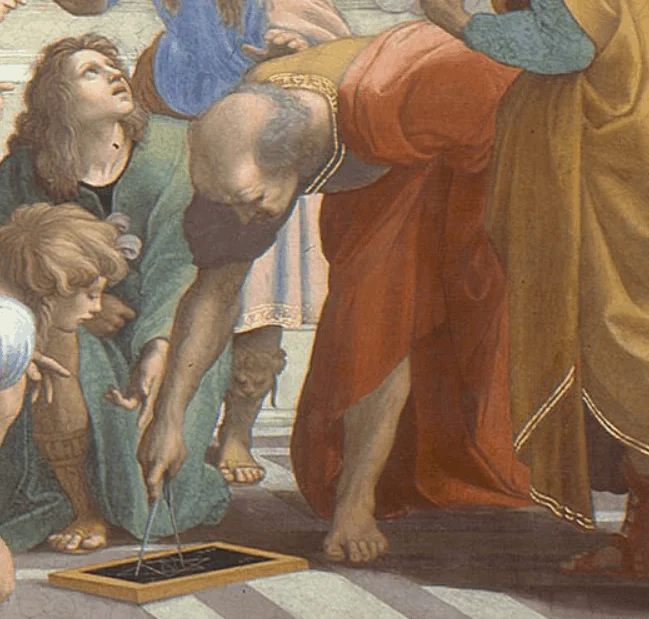
8. Raphael also included himself
Did he run out of colleagues to use as inspiration? Or did he just want to eternalize himself as one of the great seekers of knowledge in history?
Either way, Raphael also included himself in the School of Athens as what is believed to be “Apelles of Kos,” one of the most renowned painters of Ancient Greece who lived in the 4th century B.C. and who once made a portrait of Alexander the Great.
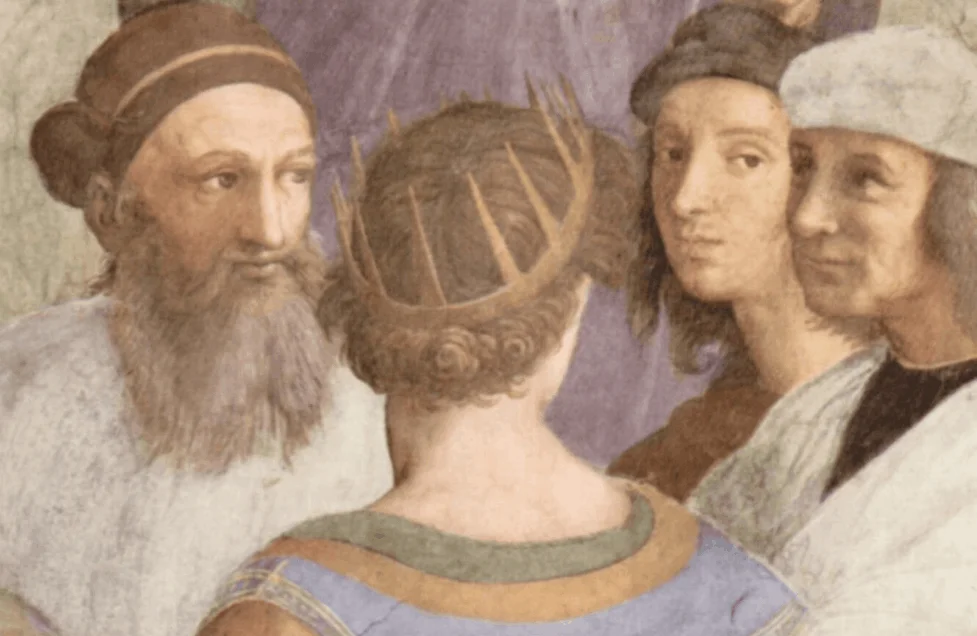
9. Not all the figures are Athenians
Another one of those intriguing facts about the School of Athens is that only about 1/3 of the believed identities of the figures portrayed are actually Athenians.
The label above the fresco also says “Causarum Cognitio,” which literally means “Knowledge of Causes,” which is more general than the “School of Athens,” a title not given by Raphael himself.
10. Raphael also got inspiration a couple of doors away
The early 16th century was really a remarkable period in history. While Raphael started working on his rooms, another genius, Michelangelo, was decorating the Sistine Chapel ceiling with paintings like for example “The Creation of Adam.”
It’s clear that Raphael took a peek at Michelangelo’s work as the allegorical figures that symbolize the 4 paintings on the walls of the Stanza della Segnatura show a lot of resemblance to the ones painted by his colleague.
One of the most amazing facts about the School of Athens is that Michelangelo, who was creating another masterpiece, was literally painting just a couple of doors away!
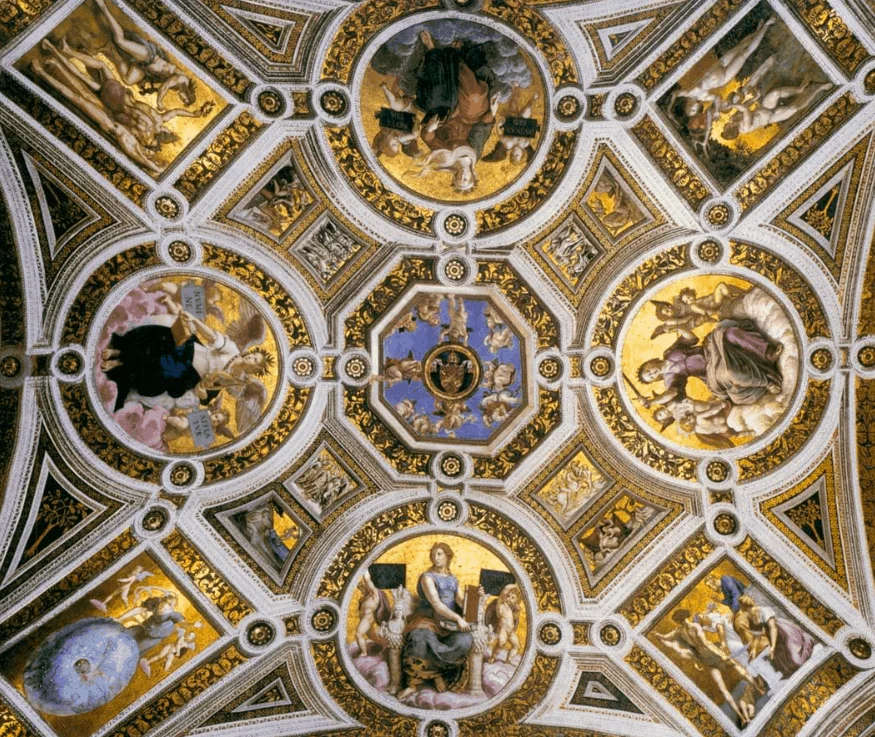
11. The architect of the St. Peter’s Basilica helped Raphael a bit
The early 16th century wasn’t just a period with talented painters. There were also several talented architects walking around in Rome. One of those was Donato Bramante, who is also depicted in the School of Athens as Euclid or Archimedes.
Bramante was one of the main architects of the largest church in the world, the Renaissance-style St. Peter’s Basilica in Vatican City.
According to historian Vasari, Bramante helped Raphael with the architectural elements in the painting. This resulted in these elements having a striking resemblance to the St. Peter’s basilica.
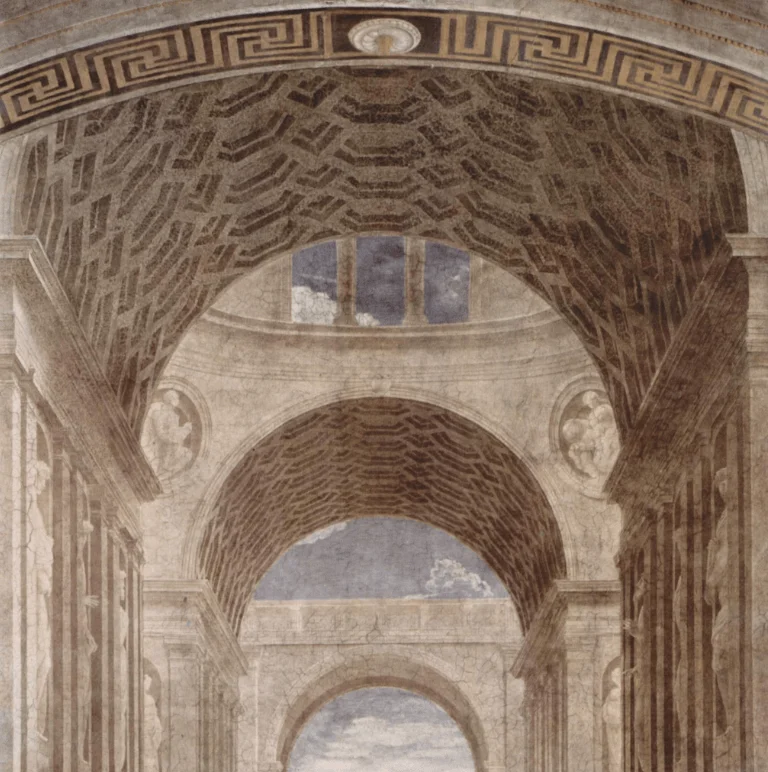
12. Raphael used a lot of drawings to create the fresco
The School of Athens consists of a lot of figures who Raphael needed to put together in one painting. His strategy was to create separate drawings of each of the figures. A lot of these drawings are extant and provide us with a great understanding of his work ethic.
The ultimate cartoon of the painting, which has just a few items of the completed fresco missing, also survived and can be found in the Pinacoteca Ambrosiana, a historical library in Milan, Italy.
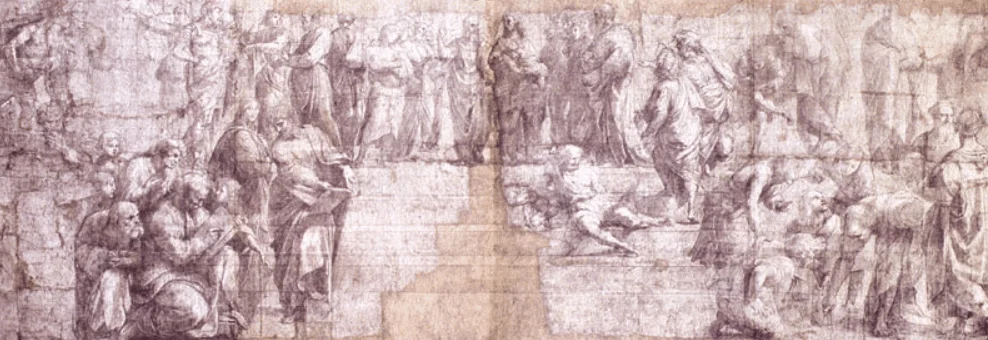
13. There are multiple copies of the paintings
As with many famous paintings, there are a lot of modern copies available. One of them can be found in the Old Cabell Hall at the University of Virginia. it was created in 1902 by George W. Breck and is nearly the same size as the original.
The most famous one was created in 1755 by Anton Raphael Mengs and is on display in the eastern Cast Court of the Victoria and Albert Museum in London.
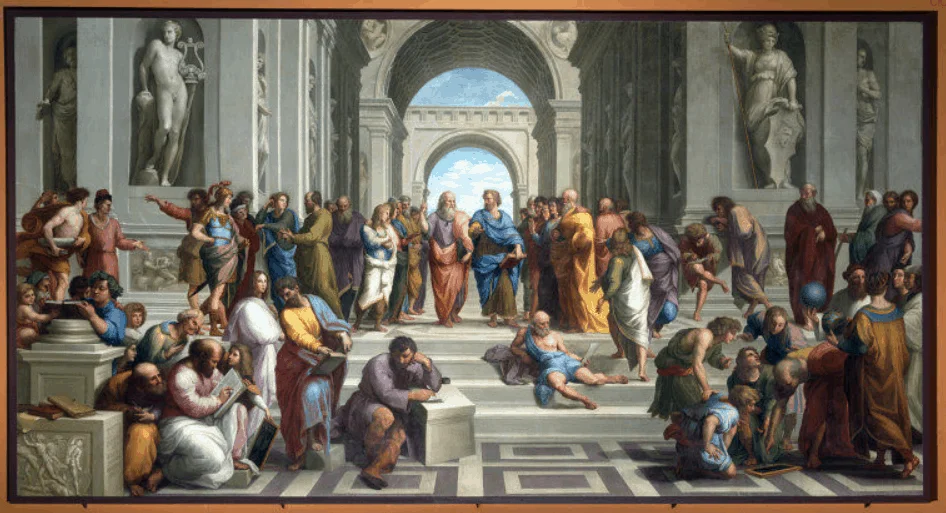
14. There’s a much older work of art with the same theme
The ancient work of art is a Roman mosaic dating back to the first century B.C. and A.D. It was created in a villa in the ancient city of Pompeii. It can now be found in the National Archaeological Museum of Naples in Italy.
It’s referred to as “Plato’s Academy mosaic” and has the same theme as the School of Athens fresco.

Quick facts about the School of Athens
- 15. It was painted by Raffaello Sanzio da Urbino (1483-1520), better known as simply “Raphael.”
- 16. It’s located in one of the Raphael Rooms in the Apostolic Palace in Vatican City, which is part of the Vatican Museums.
- 17. The Stanza della Segnatura was the first room to be decorated with frescoes and the School of Athens was the third of the 4 paintings to be created.
- 18. The fresco measures 5 meters × 7.7 meters (200 in × 300 in).
- 19. It was created between 1509 and 1511, a period considered to be the “High Renaissance.”
- 20. The label above the work reads “Causarum Cognitio,” which translates to “Knowledge of Causes.”
- 21. It was commissioned by Pope Julius II who established the Vatican Museums in the year 1506 and who also commissioned the rebuilding of the St. Peter’s Basilica.
- 22. The two statues in the back are Apollo, God of light, archery, and music, and Athena, goddess of wisdom, dressed as her Roman counterpart Minerva.
- 23. The School of Athens is considered to be Raphael’s ultimate masterpiece, which means a lot considering the numerous masterpieces he produced.
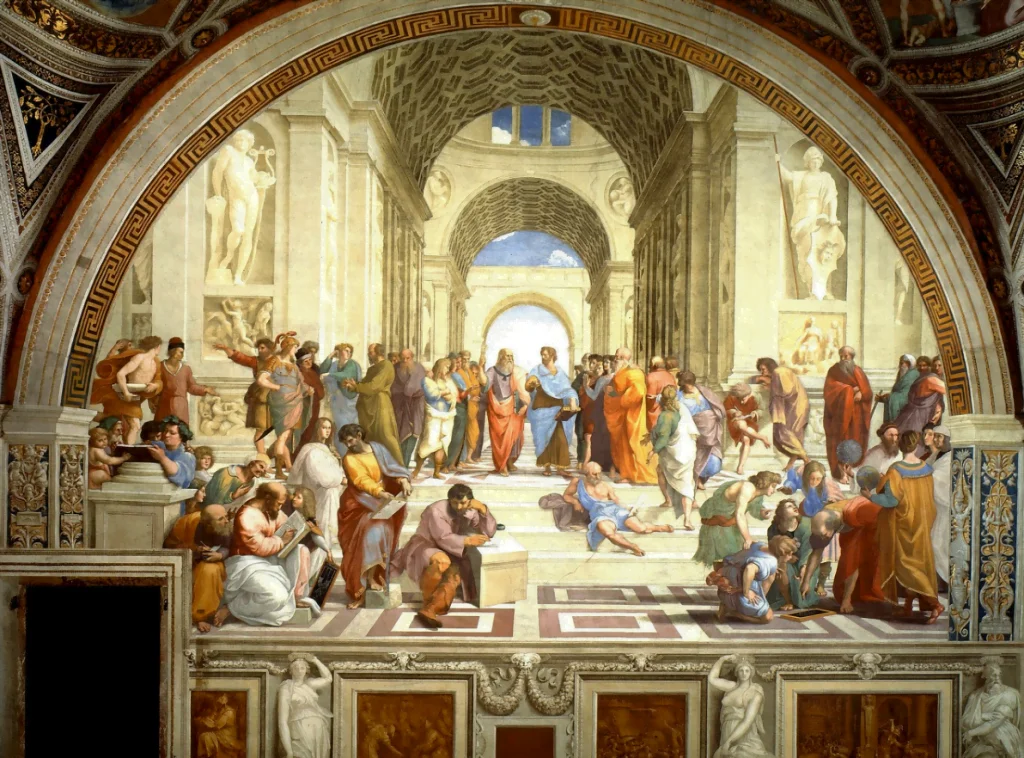



Leave a comment
You must be logged in to post a comment.